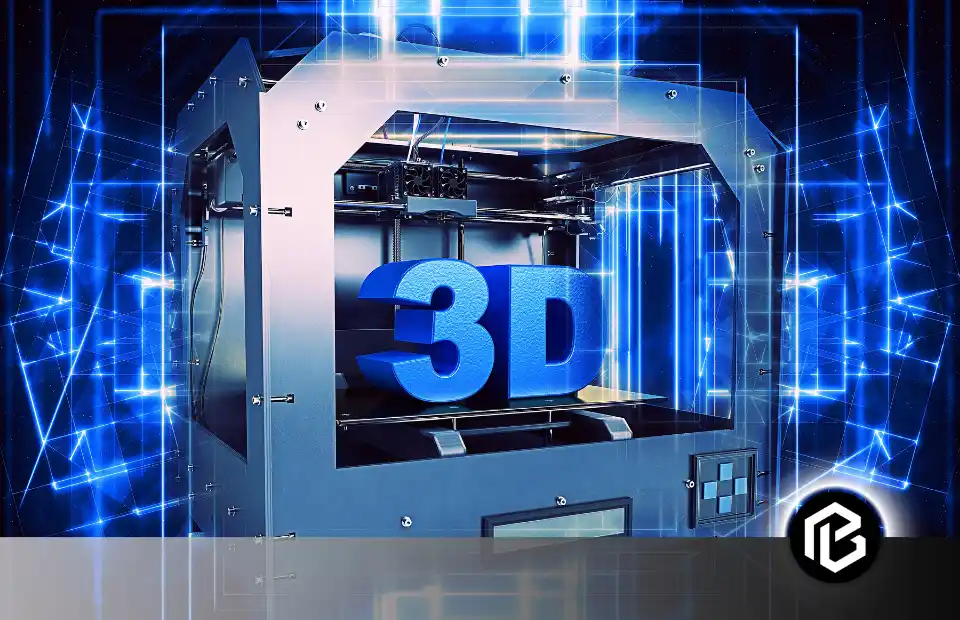A Technology Transfer Office (TTO)’s main function in collaborative research is to act as a link between academic institutions and industry. In this modern scientific and technological world, Collaborative research has become an essential part of our lives. Institutes and researchers work on complex challenges so they rely on partnerships and collaborations for making effective decisions and researching new things to enhance their expertise by sharing resources and knowledge. Technology growing very fast and we see the impact of the Internet of Things (IoT) in Smart Cities is unbelievable.
No doubt, managing collaborative systems is a complex task concerning various legal concerns, administration and logistical considerations. The Technology Transfer Office(TTO) plays an important role here. We will see the primary functions of TTO concerning collaborative research, its importance in innovation, protecting intellectual property and increasing economic growth.
Technology Transfer Office (TTO)
Technology is growing very fast, and advancement and innovation in technology is unbelievable. In this modern era, the collaborative research approach is increasing day by day. In other words, we can’t do any innovation in technology without collaborative research. In the digital world, the problems we face become increasingly complex and multifaceted.
No single individual, organization, or even a country can manage them in isolation. Collaborative research consists of partnerships between different technology academic institutions, research organizations, industries, and governmental sectors. These partnerships enhance the strength and resources of each stakeholder to solve common challenges and advance the boundaries of knowledge.

Technology Transfer Office(TTO) are the main component of collaborative research. TTOs found within academic institutions and research organizations, serve as bridges between the academic and industrial world. They play an important role in facilitating the transfer of knowledge, technologies, and intellectual property from academia to industry and vice versa. Here the question is: What is the main function of a TTO in the context of collaborative research? To answer this question, we will see the role of TTOs and how they enable, support, and regulate collaborative research efforts.
The Role of a Technology Transfer Office

1. Facilitating Collaborations
One of the main functions of the Technology Transfer Office is to provide collaborations between academic institutions, research organizations, and industry partners. Collaborative research starts with identifying common interests, complementary strengths, and mutual goals. TTOs provide interconnection between them and help them to identify potential partners and foster the formation of research partnerships.
TTOs maintain the database of research interests, expertise and available resources within their respective institutions. They help researchers and collaborators to stay connected and initiate dialogues. TTOs also assist the researchers in negotiating terms like funding agreements, intellectual property rights and data sharing. They also ensure the interests of all parties are considered and protected.
2. Protecting Intellectual Property
Intellectual property (IP) is an essential factor in collaborative research. Researchers invest their important time and resources into developing new technologies, products, and knowledge. The protection of their intellectual property is essential to encourage them to make innovations and collaborations. TTOs play a vital role in protecting the IP of researchers and their institutions.
TTOs also help researchers to understand their IP rights and responsibilities. TTOs guide patent applications, copyright, and licensing agreements. TTOs ensure that intellectual property agreements are correct, fair and equal, to ensure the concerns of all partners in collaborative research projects.
3. Technology Licensing and Commercialization
TTOs also manage the commercialization of the technologies and innovations that developed with the help of collaborative research efforts. TTOs seek opportunities to license intellectual property to external partners, mostly in the private sector. This process can result in financial returns for the institution, and the inventors, and fund further research and innovation.
TTOs engage in technology scouting to identify potential licensees or industry partners interested in adopting and commercializing the developed technologies. Then they negotiate licensing agreements, determine royalty structures, and oversee the transfer of technology. In doing so, TTOs promote the transformation of research outcomes into tangible products, services, and economic value.
4. Securing Funding and Grants
As with other industries, Collaborative research also requires financial support. TTOs assist in securing funding and grants to support these research processes. They are accomplished in funding management, which may include government grants, industry-sponsored research, philanthropic donations, and venture capital.
TTOs also help researchers to identify suitable funding opportunities and provide complete guidance in preparing grant proposals. They may also offer support in budgeting, compliance, and reporting. It ensures that collaborative research projects receive the necessary financial resources to succeed.
5. Compliance and Regulatory Support
Collaborative research is also concerned with various legal and regulatory requirements, including research ethics, data protection, and export controls. TTOs ensure that all collaborative research projects are according to these regulations. They guide compliance and help researchers to navigate the complex landscape of research regulations. They also ensure that all parties involved in the collaboration are aware of their responsibilities.
TTOs also assist in managing the interest affairs of researchers, ensuring that researchers maintain their objectivity and adhere to ethical standards while working with external partners. This function is very important to maintain the integrity of collaborative research efforts.
6. Educational and Outreach Initiatives
Technology Transfer Offices also provide opportunities to educate researchers, students, and the wider community about the value and opportunities associated with collaborative research. They organize workshops, seminars, and informational sessions to promote the benefits of working with external partners and engaging in technology transfer activities.
In addition, TTOs engage in outclass initiatives to build networks and strengthen relationships with interested collaborators. They actively participate in conferences, industry events, and networking forums to connect with industry professionals and identify opportunities for collaboration.
The Impact of Technology Transfer Offices on Collaborative Research

The functions and activities of Technology Transfer Offices have a profound impact on collaborative research. Here are some of the important ways in which TTOs enhance and drive the success of collaborative research efforts:
1. Innovation Acceleration
TTOs are like stairs in the success of innovation. Technology Transfer Offices manage all the collaborations and technology transfer. TTOs allow researchers to access external resources, expertise, and funding. This accelerates the development and commercialization of innovative technologies, products, and solutions.
2. Economic Growth
Collaborative research, often resulting in commercialized technologies, effectively contributes to economic growth. TTOs play an essential role in converting research outcomes into market-ready products, attracting investment, and creating new business opportunities. This results in continuous growth in economic development and job creation in the areas or countries where collaborative research takes place.
3. Knowledge Exchange
TTOs also promote knowledge exchange about technology and research between academic and industrial sectors. By connecting researchers with industry partners, they facilitate the transfer of academic knowledge to real-world applications. In return, industry partners provide valuable insights, practical experience, and industry-specific expertise to the academic community. They arrange many educational webinars to spread awareness about technology among researchers.
4. Research Visibility
Collaborative research consists of various publications, patents, technological advancement and writing complex algorithms. TTOs help researchers to show their work and research worldwide. With the help of TTOs, researchers target s broader audience which enhances the visibility of their work. It increases their communication with many expert researchers around the world.
5. Regional Development
TTOs can contribute to regional development by attracting industry partners and investments to specific geographic areas. This has the potential to transform regions into hubs of innovation and research, benefiting local economies and communities.
TTOs engage industry partners to invest in specific or local geographic areas. This covers the whole region as dividing it into different hubs that provide many sectors of innovation and research.
6. Risk Mitigation
Collaborative research can be risky if we don’t follow the legal and financial rules and policies. TTOs help to reduce these risks by ensuring that all parties understand their rights, responsibilities, and the potential consequences of collaboration. They provide valuable expertise in risk management, ultimately safeguarding the interests of the researchers and institutions.
Challenges Faced by Technology Transfer Offices

No doubt, TTOs play an important role in collaborative research, they also face several challenges that can affect their efficiency. Some of the common challenges include:
1. Resource Constraints
Unfortunately, TTOs have limited resources. Which can stop their ability to support a growing number of collaborative research initiatives. Adequate funding and staffing are essential for TTOs to fulfil their functions effectively.
2. Complex Legal and Regulatory Landscape
Controlling the complex legal and regulatory landscape of collaborative research can be challenging. TTOs must stay up to date with evolving regulations and ensure that research projects remain compliant.
3. Balancing Commercialization and Research Goals
TTOs face the huge task of balancing the commercialization of intellectual property with the primary research and educational missions of their institutions. Maintaining this balance is essential to maintain the trust of researchers and the academic community.
4. Managing Conflicts of Interest
TTOs must manage conflicts of interest that can arise when researchers engage in collaborative research with external partners. This requires clear policies and procedures to ensure transparency and ethical conduct.
5. Effective Communication
Effective communication is the base of collaborative research. TTOs provide the bridge or connection between researchers, industry partners, and administrative staff. TTOs manage the whole conversation and information because miscommunication can result in a misunderstanding between the researchers. it can affect the progress of collaborative research.
Conclusion
TTOs provide a path to collaborative research, for success in developing new innovative technologies and facilities of broader research. It also increases economic growth, exchange of knowledge and regional development. technology transfer offices give full-time support to collaborative research. No doubt they face many complex challenges as well but they grow very fast and overcome these problems effectively.
With the rapid increase in digital advancement and complex challenges, the role of TTOs in supporting collaborative research has become more important. These offices provide a bridge between academia and industry, fostering relationships that lead to breakthrough innovations and solutions. In this way, these technology transfer offices push society to the next level and contribute to a brighter, more technologically advanced future.
Frequently Asked Questions on Technology Transfer Office
How does a TTO support collaborative research efforts?
A TTO supports collaborative research efforts by providing services and resources to facilitate partnerships, negotiate agreements, manage IP rights, navigate legal and regulatory requirements, secure funding opportunities, and foster innovation and entrepreneurship among research collaborators.
What resources does a TTO offer to support collaborative research initiatives?
A TTO offers a range of resources to support collaborative research initiatives, including access to expertise in technology commercialization, market analysis, business development, funding opportunities, entrepreneurship training, and networking events with industry partners and investors.
What are the benefits of engaging with a TTO in collaborative research projects?
Engaging with a TTO in collaborative research projects offers numerous benefits, including access to specialized expertise and resources, assistance in navigating complex legal and regulatory landscapes, opportunities for technology commercialization and economic development, and enhanced visibility and impact for research outcomes.





